Refine search
Actions for selected content:
5486 results in Thermal-fluids engineering
Copyright page
-
- Book:
- Plasma Dynamics for Aerospace Engineering
- Published online:
- 20 June 2018
- Print publication:
- 21 June 2018, pp vi-vi
-
- Chapter
- Export citation
5 - Magnetohydrodynamics Equations
-
- Book:
- Plasma Dynamics for Aerospace Engineering
- Published online:
- 20 June 2018
- Print publication:
- 21 June 2018, pp 146-184
-
- Chapter
- Export citation
Preface
-
- Book:
- Plasma Dynamics for Aerospace Engineering
- Published online:
- 20 June 2018
- Print publication:
- 21 June 2018, pp xi-xiv
-
- Chapter
- Export citation
1 - Plasma Physics Fundamentals
-
- Book:
- Plasma Dynamics for Aerospace Engineering
- Published online:
- 20 June 2018
- Print publication:
- 21 June 2018, pp 1-35
-
- Chapter
- Export citation
10 - Applications
-
- Book:
- Plasma Dynamics for Aerospace Engineering
- Published online:
- 20 June 2018
- Print publication:
- 21 June 2018, pp 342-382
-
- Chapter
- Export citation
6 - Ionization Processes in Gas
-
- Book:
- Plasma Dynamics for Aerospace Engineering
- Published online:
- 20 June 2018
- Print publication:
- 21 June 2018, pp 185-224
-
- Chapter
- Export citation
Contents
-
- Book:
- Plasma Dynamics for Aerospace Engineering
- Published online:
- 20 June 2018
- Print publication:
- 21 June 2018, pp vii-x
-
- Chapter
- Export citation
Appendix: Physical Constants and Dimensions
-
- Book:
- Plasma Dynamics for Aerospace Engineering
- Published online:
- 20 June 2018
- Print publication:
- 21 June 2018, pp 383-384
-
- Chapter
- Export citation
2 - Plasma in a Magnetic Field
-
- Book:
- Plasma Dynamics for Aerospace Engineering
- Published online:
- 20 June 2018
- Print publication:
- 21 June 2018, pp 36-70
-
- Chapter
- Export citation
4 - Plasma Dynamics Formulation
-
- Book:
- Plasma Dynamics for Aerospace Engineering
- Published online:
- 20 June 2018
- Print publication:
- 21 June 2018, pp 108-145
-
- Chapter
- Export citation
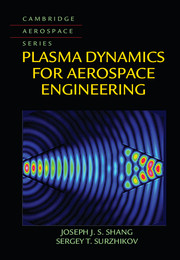
Plasma Dynamics for Aerospace Engineering
-
- Published online:
- 20 June 2018
- Print publication:
- 21 June 2018
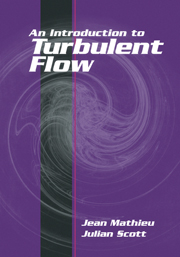
An Introduction to Turbulent Flow
-
- Published online:
- 28 May 2018
- Print publication:
- 26 June 2000
-
- Textbook
- Export citation
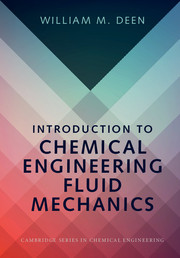
Introduction to Chemical Engineering Fluid Mechanics
-
- Published online:
- 28 May 2018
- Print publication:
- 15 August 2016
-
- Textbook
- Export citation

Applied Computational Aerodynamics
- A Modern Engineering Approach
-
- Published online:
- 28 May 2018
- Print publication:
- 27 April 2015
-
- Textbook
- Export citation
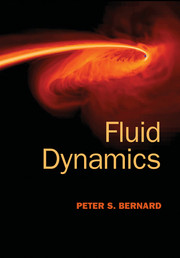
Fluid Dynamics
-
- Published online:
- 28 May 2018
- Print publication:
- 05 May 2015
-
- Textbook
- Export citation

Jet Propulsion
- A Simple Guide to the Aerodynamics and Thermodynamic Design and Performance of Jet Engines
-
- Published online:
- 28 May 2018
- Print publication:
- 22 July 2015
-
- Textbook
- Export citation
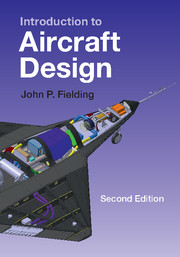
Introduction to Aircraft Design
-
- Published online:
- 28 May 2018
- Print publication:
- 03 April 2017
-
- Textbook
- Export citation

Mechanics of Wave-Seabed-Structure Interactions
- Modelling, Processes and Applications
-
- Published online:
- 28 April 2018
- Print publication:
- 26 April 2018
Appendix C - Derivation of u–U Approximation (Cha et al. 2002)
-
- Book:
- Mechanics of Wave-Seabed-Structure Interactions
- Published online:
- 28 April 2018
- Print publication:
- 26 April 2018, pp 323-325
-
- Chapter
- Export citation
5 - Mechanics of Wave-Seabed-Pipeline Interactions
-
- Book:
- Mechanics of Wave-Seabed-Structure Interactions
- Published online:
- 28 April 2018
- Print publication:
- 26 April 2018, pp 177-234
-
- Chapter
- Export citation
